Heavy rains and heatwaves have severely impacted agricultural production in China.
Devastating Floods
Continuous heavy rainfall for several days has resulted in severe flooding in China’s northeastern grain-producing region, leading to the deaths of 14 people and raising concerns over food security as floodwaters inundate agricultural fields, according to CNN.
The torrential rains, a consequence of Typhoon Doksuri combined with a subtropical high-pressure system, have ravaged northern China since late July 2023, forcing over one million people to evacuate and causing at least 30 fatalities in the suburbs of Beijing and surrounding Hebei province.
As the storm moved further north, an additional 14 fatalities were reported on Sunday, August 6, in Shulan City, Jilin Province.
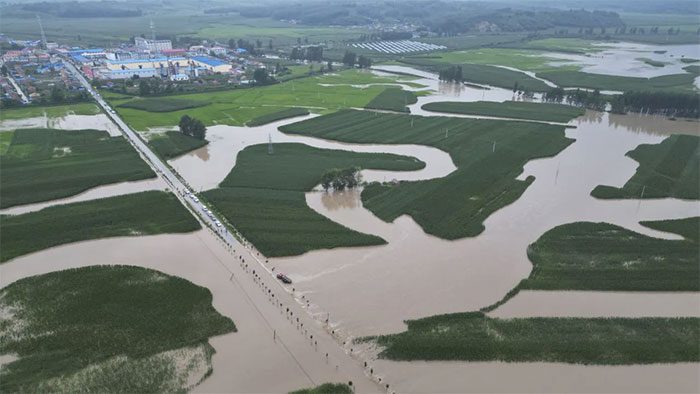
Fields and roads in Shulan City, Jilin Province, northeastern China submerged by floodwaters on August 4. (Photo: Yan Linyun / AP).
Among the deceased were three local officials, including the city’s deputy mayor, who was swept away by floodwaters while conducting rescue operations last week, as stated by the Shulan city government. Another official remains missing. According to Xinhua News Agency, over 18,000 people have been evacuated from Shulan.
Further north in the neighboring Heilongjiang Province, the rivers that irrigate its fertile fields have overflowed, submerging rice paddies, destroying vegetable greenhouses, and damaging factories, Chinese media reported.
Across the province, 25 rivers have exceeded warning levels and are at risk of bursting their banks, according to the Heilongjiang authorities.
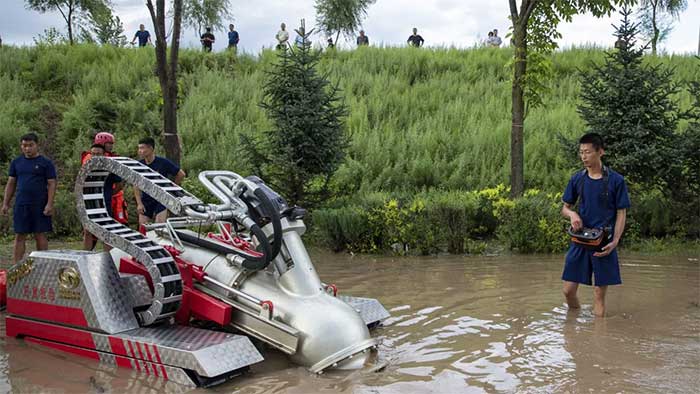
Firefighters operate a drainage machine near a village in Mudanjiang City, Heilongjiang Province, northeastern China on August 5. (Photo: Zhang Tao / AP).
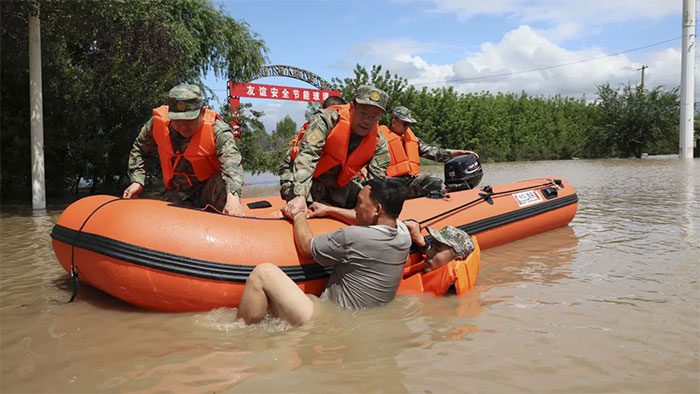
Rescue workers pulling a citizen from floodwaters in Harbin on August 5. (Photo: VCG/Getty).
On Sunday, August 6, China’s Ministry of Water Resources raised the flood emergency response level to Level 3 in Jilin and Heilongjiang provinces—the third highest in a four-tier emergency response system.
In Harbin, the capital of Heilongjiang, over 162,000 people have been evacuated, while more than 90,000 hectares of crops have been damaged by floodwaters, according to People’s Daily.
In Shangzhi City, Harbin, over 42,575 hectares of crops have been destroyed by the worst storm the city has faced in over six decades, as reported by Xinhua News Agency.
Rice Fields Submerged
Due to the impact of the largest floods in 140 years, many villages and vast agricultural areas have also been flooded in Wuxiang, another major rice-producing city in Heilongjiang. Local authorities are still assessing the damage.
The situation of submerged agricultural land has heightened concerns about the potential impacts on food security in the world’s second-largest economy, as extreme weather linked to climate change poses increasing threats to China’s food supply and agricultural sectors.
Known as China’s rice bowl, the three far northeastern provinces—Heilongjiang, Jilin, and Liaoning—produce more than one-fifth of China’s total grain output, owing to the region’s fertile black soil. Major crops produced there include soybeans, corn, and rice.
Last week, the Ministry of Agriculture and Rural Affairs of China warned that heavy rains from Typhoon Khanun and Typhoon Doksuri were expected to cause “serious impacts” on China’s agricultural production.
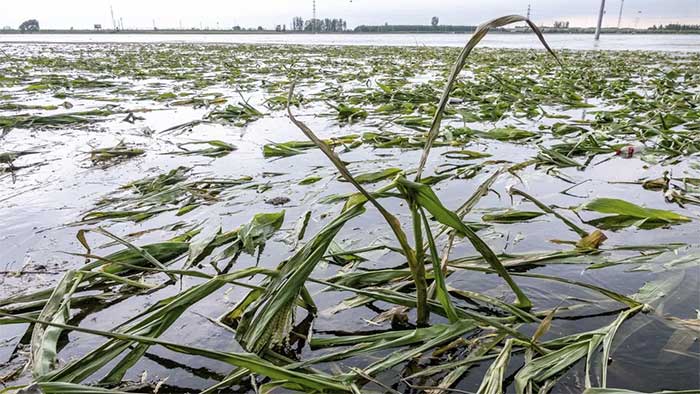
A cornfield submerged by floodwaters in a village in Hebi City, Henan Province on August 5. (Photo: Costfoto/NurPhoto/Getty)
Destruction of rice fields in northeastern China began after heavy rainfall in late May flooded Henan Province, another significant grain-producing area that produces about one-third of China’s wheat output. Henan authorities reported that the rainfall (causing flooding) was the most devastating for wheat production in a decade, according to state media.
According to the National Bureau of Statistics, the heavy rains occurring just before harvest have led to a 0.9% decline in China’s summer wheat output for 2023—marking the first decrease in seven years.
Moreover, subsequent heatwaves have scorched much of northern China and broken temperature records in June, causing drought conditions that hinder the growth of young crops such as corn and soybeans, officials from China’s Meteorological Administration noted in a press conference in July 2023.
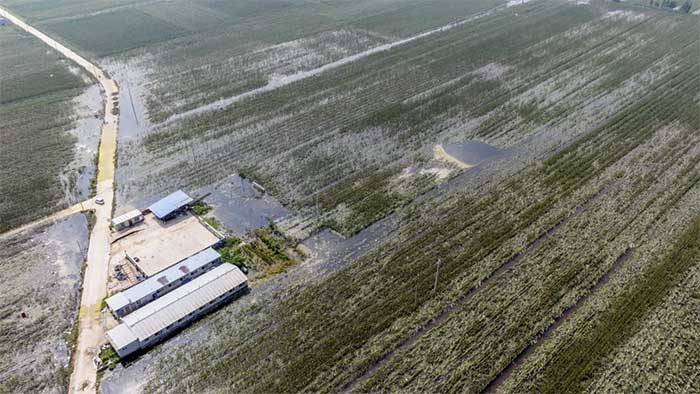
A flooded farm in Xinxiang City, Henan Province on August 5. (Photo: Costfoto/NurPhoto/Getty).
In the short term, these “blows” to China’s agriculture sector are expected to affect food prices, which have remained relatively stable in recent months, mainly due to increasing deflation risks in the Chinese economy.
China experienced the worst heatwaves and droughts in decades during the summer of 2022, leading to widespread power shortages and disrupting food and industrial supply chains.
Since then, Beijing has intensified its focus on food security. In March, President Xi Jinping stated that agriculture is the foundation of national security.




















































